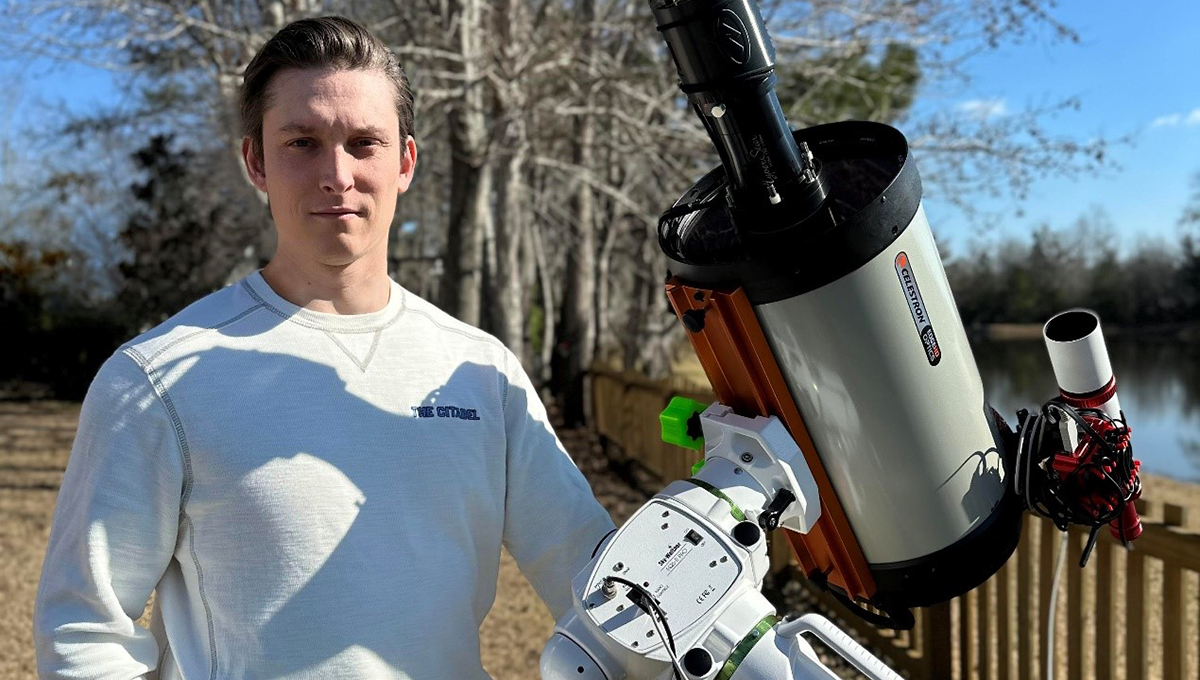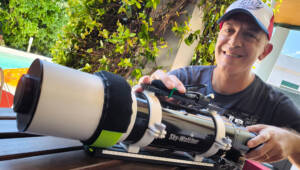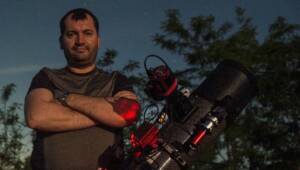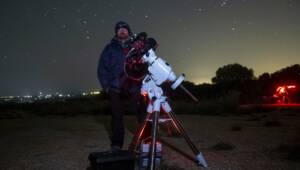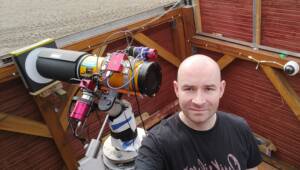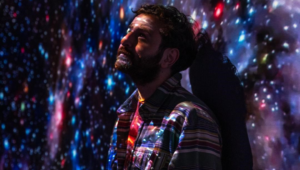Hello Blake, thanks for accepting our interview invitation. Congratulations on winning the ASIWEEK competition in week #07/2024!
Q1: At first, congratulation that your nice image won #ASIWEEK. Can you introduce yourself to us?
Thanks a bunch! I’m thrilled that my pic of the Soul Nebula got voted ASIWEEK Picture of the Week #07/2024 and Quarter 1 of 2024. I’m Blake Behrends, 33, living in a small southern town near Charleston, South Carolina, and I work in the business continuity and disaster preparedness field.
Q2: When did you start astrophotography and how?
I began astrophotography in mid-2022, shortly after the spring and took my first photo of the Andromeda Galaxy in August of 2022. With the help of my friend Mario Paliferro, I was able to overcome the steep learning curve that presents itself with RASA systems as well as with processing. I essentially got into the mix of astrophotography after becoming inspired by an Astrophysics professor that I had in college. After becoming a little proficient with my equipment, I created an Instagram account to network with others in the community and industry. My work can be found at: https://www.instagram.com/projectregulus

Q3: Why do you love astronomy? What does it mean to you?
I have always been captivated by the cosmos since I was a young child. Ever since I got to witness comet Hale-Bopp’s closest approach in the mid-1990’s, I was hooked!
For me, loving astronomy involves a deep appreciation, curiosity, and passion for the study and observation of celestial objects. Typically, a significant portion of celestial objects remains imperceptible to the naked eye, a limitation overcome through the medium of astrophotography. Even after capturing numerous images, the sense of surrealism persists for me. The ability to direct my telescope towards the profound darkness of the night sky, initiate an exposure, and subsequently witness the cosmic wonders the universe unfolding on my screen, always seems surreal to me.
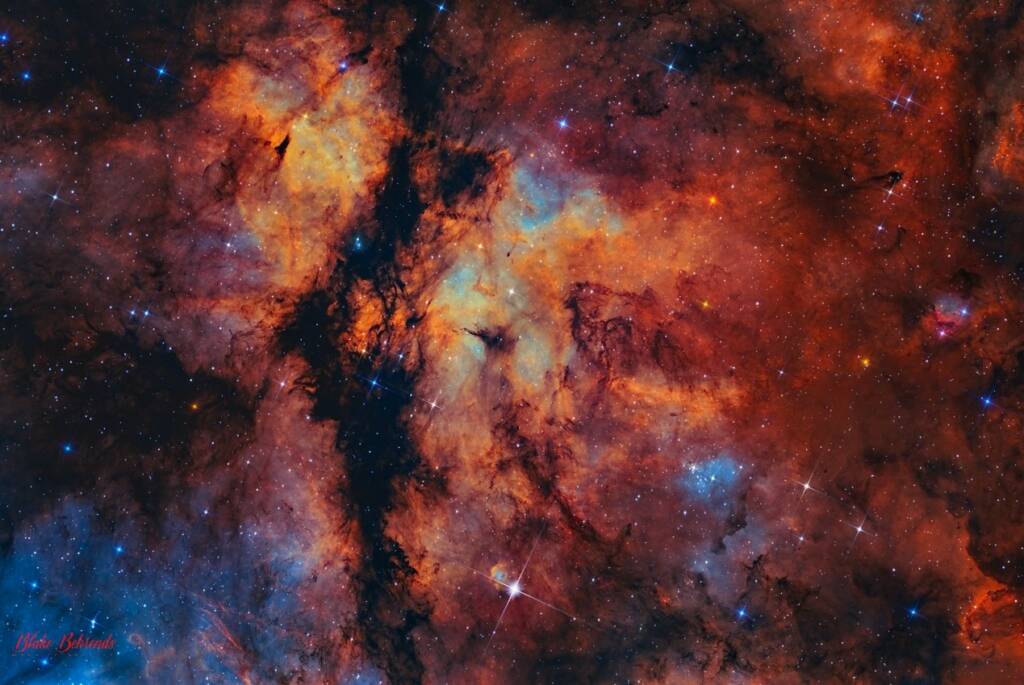
Q4: Can you tell us about the winning photo?
Absolutely! My shot I nicknamed The Heart of The Soul, features the Soul Nebula officially known as Westerhout 5, the Soul nebula consists of several small star clusters one of which is IC1848. The Soul Nebula is a vast star-forming region illuminated by the light of young stars surrounded by star-forming clouds of dust and gas, also referred to as a “Stellar Nursery”. The stars in this area are younger than a couple of million years and are just commencing their life cycles, underscoring the significance of dense nebulae as crucial contributors to the cosmic creative processes in the universe. This nebula has always been a bucket list structure to capture, which makes winning Q1 even better!
My shooting processes in its entirety is usually quite unorthodox, as it was for this photo. My astrograph system is very fast as the focal ratio is F/2.2, but I still sometimes opt to shoot 5-minute exposure, and that’s exactly what I did for this photo. I took this photo in a rural area just north of Stillwater, Oklahoma at my father’s house. The light pollution is exceptionally low as I was under Bortle 3 skies. Such dark skies presented me with the opportunity to cut the integration time down to 3 nights, dedicating one narrowband filter per night. Usually, I will double or even triple that amount of integration time while shooting at my home, which is in a Bortle 6 zone.
I collected 125 exposures of Hydrogen alpha, 78 exposures of Oxygen three, and 80 exposures of Sulfur two, at 5 minutes per exposure with a total integration time of 23 hours and 35 minutes.
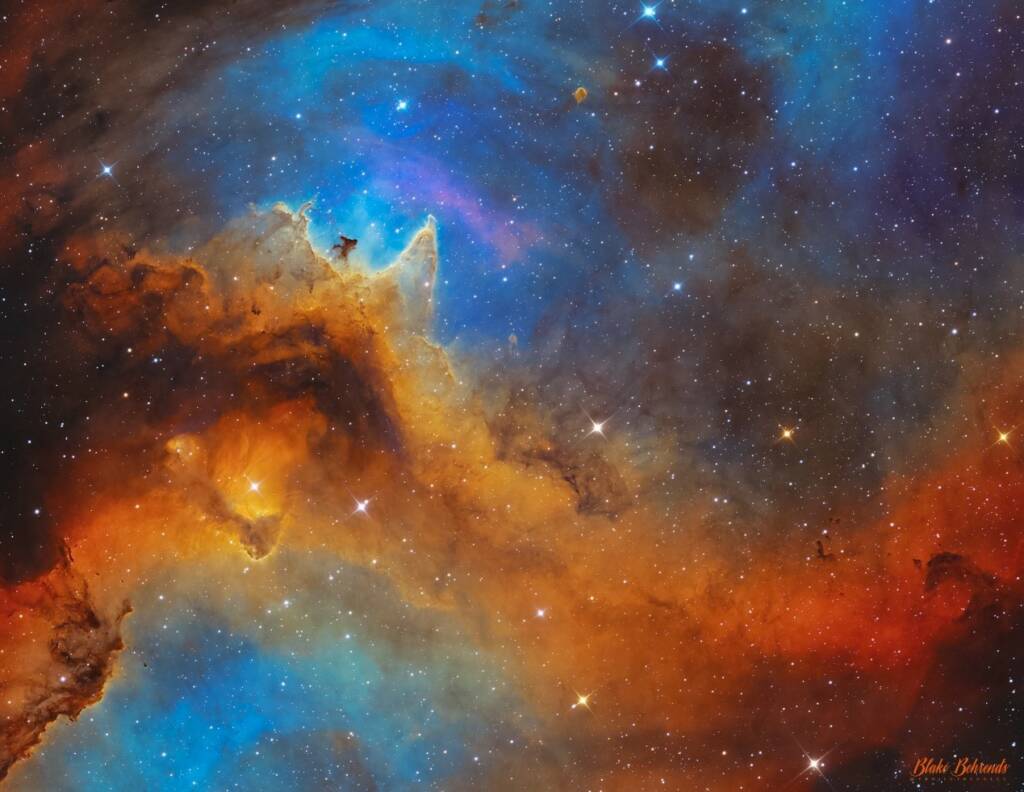
Q5: What gear do you use? Any pictures of them?
My equipment is as follows:
Telescope: C9.25” EdgeHD
Reducer: Hyperstar V4 & Celestron 7x
Guide scope: Williams Optics 50/200mm
Mount: EQ6R-Pro
Main camera: ZWO ASI2600MM Pro
Guide camera: ZWO ASI174MM Mini
IDAS UHS Narrowband Filters
Baader Broadband LRGB Filters
Control Unit: ZWO ASIAIR Plus
Auto Focuser: ZWO EAF
Dew Heater: Celestron Heater Ring
Dew Shield: Celestron Aluminum
Custom adjustment knobs: mpastrodesigns
Custom Cable Manager: rajs_astrophotography
Power Supply: Pegasus Astro
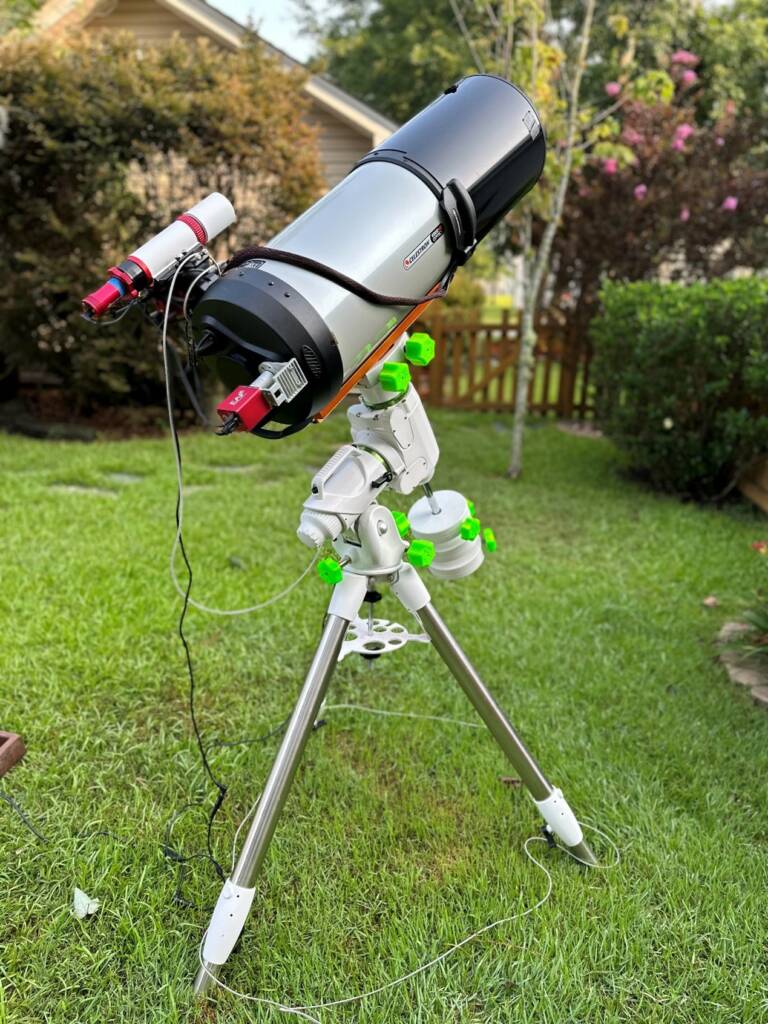
Q6: Which is your favorite astronomical target that you have photographed so far?
That’s a very difficult question to answer, but if I had to choose, it would be a tie between my Seagull Nebula photo and the Supernova Remnant SNR G108.2-00.6 photo. Despite the SNR having been cataloged in the past, my photo was the first color photo taken of it. Ironically when I had finished up capturing this structure that I accidentally came across while photographing the Wizard Nebula, another Bray Falls and Curtis Morgan happened to locate it and began capturing it as well. Since this structure is only known by its catalogue, we decided to jointly name the structure. Bray and Curtis named it the Orb Weaver Nebula and I named it Tim’s Nebula, after my two-year-old son. Unfortunately, the structure is extraordinarily dim, so I am unable to properly resolve the fainter regions of oxygen three until I can shoot it at a dark site.
The Seagull Nebula was the second monochromatic photo I’ve ever taken, and I broke all the rules from shooting 5-minute exposures on a relatively bright structure, to shooting Oxygen three during an 85% illuminated moon that was less than 40° away from the target. This photo remains one of the best I have ever taken.

Q7: How is the air quality in your region? Where do you normally take astrophotos?
The air quality in my region is quite turbulent and very humid, which comes naturally when you live within swamplands. Most of my photos are shot here, but fortunately I have been able to make the 16-hour drive back home to Oklahoma every summer, where the air quality is very dry, and the skies are significantly dark and less turbulent during that time of year. I usually reserve dark nebulae targets for my trips back home, but occasionally shoot brighter emission nebulae just like the Soul Nebula!
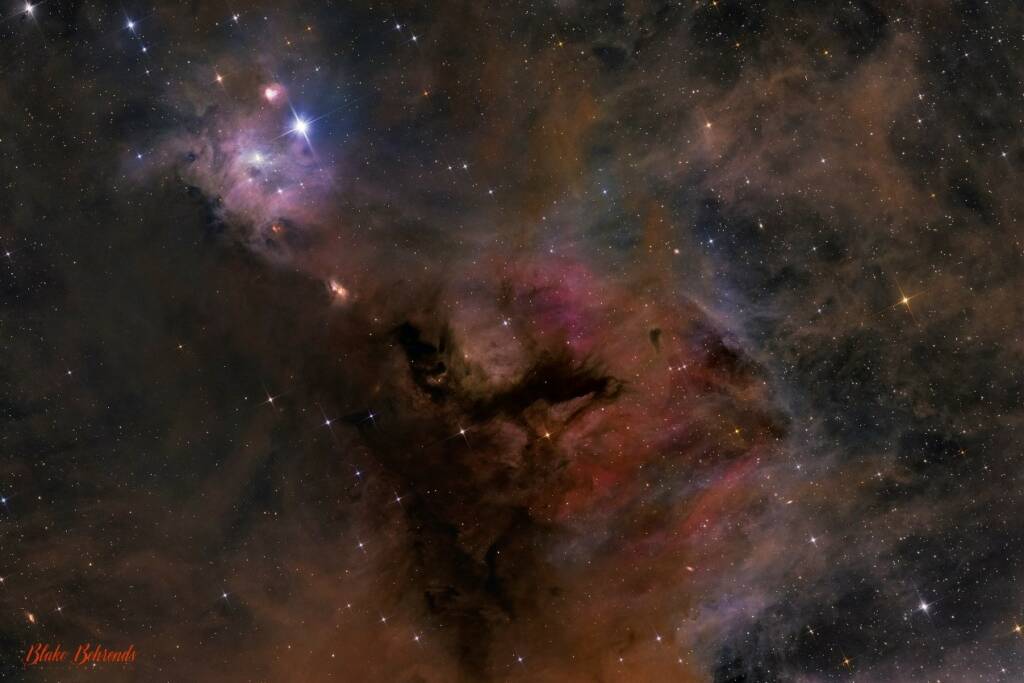
Q8: How long do you usually spend on processing? What do you think is the most important part of this stage?
I can spend anywhere from 6 to 30 hours processing my photos. What it really comes down to is whether I’m shooting a dim structure and/or have a lot of impurities I must remove from the photo. Generally, photos taken in higher light pollution can significantly extend my processing time, especially if they contain dark or dim structure. I believe there are two most crucial stages of processing, which will make or break a photo, these are the linear stage processes and the stretch to non-linear. If these two stages are not done correctly, the quality will begin to exponentially diminish the further you get through your processing session.
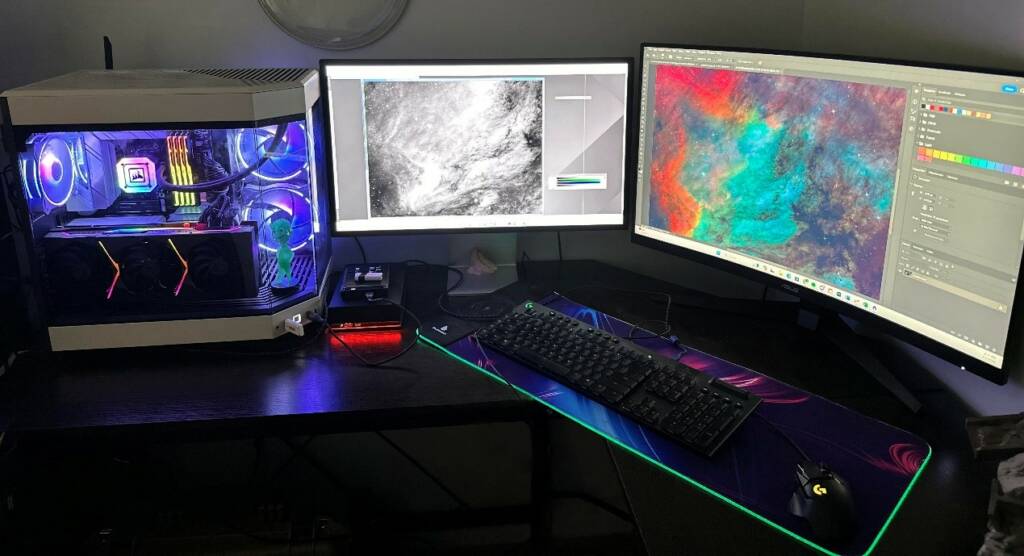
Q9: Besides astrophotography, are you actively involved in other astronomy-related activities?
Yes! Presently, I built a team collaborating with astronomers Jasa Rebula, Casey Good, Greg Turgeon, and have recently initiated collaboration with astronomer Jonas Moiel. Our collective focus involves the exploration for unidentified celestial entities, with a primary emphasis on planetary nebulae. Also, I had the privilege to be a guest speaker and present my work and knowledge to The Citadel’s STEAM Camp participants back in June of last year, which was quite fascinating to experience today’s youth have such a deep interest in astronomy, especially blackholes!

Q10: Is there any memorable story you can share with us from your astrophotography days?
Oh, I definitely do! Last May I was fighting the Canadian wildfire smoke that engulfed most of North America for months, to capture the iconic Eagle Nebula/Pillars of creation. One morning I woke up and it had been raining for an hour, although the weather forecasts all indicated that it would not! I ran outside and covered everything up with my Telegizmos cover and after the storm concluded, I brought everything in. I’ll never forget carrying my 9.25” Edge HD Schmidt-Cassegrain Telescope into my house and hearing the water sloshing around the inside of it. As devastating as it can be for your astro gear to get rained on, every single component I had survived without issue. Fast forward nearly a year later and everything still runs flawlessly! So, a word of caution, have weather alarms set if you go to sleep, you may not be as lucky as I was!!!

Q11: What advice do you have for newcomers to astrophotography?
This is a VERY expensive hobby that has a steep learning curve and is unlike any other form of photography out there. With that said, be sure you’re committed to the hobby before you buy into it. Additionally, I’m a major advocate for the mindset of prioritizing long-term value and quality over short-term cost savings. More money upfront on quality gear will ultimately lead to greater satisfaction and avoid the disappointment or regret associated with choosing cheaper ‘entry-level’ options that may not meet your expectations or may require frequent replacements or repairs. As they say, “buy once cry once”. Oh yeah, and make sure you have a reliable weather alarm!
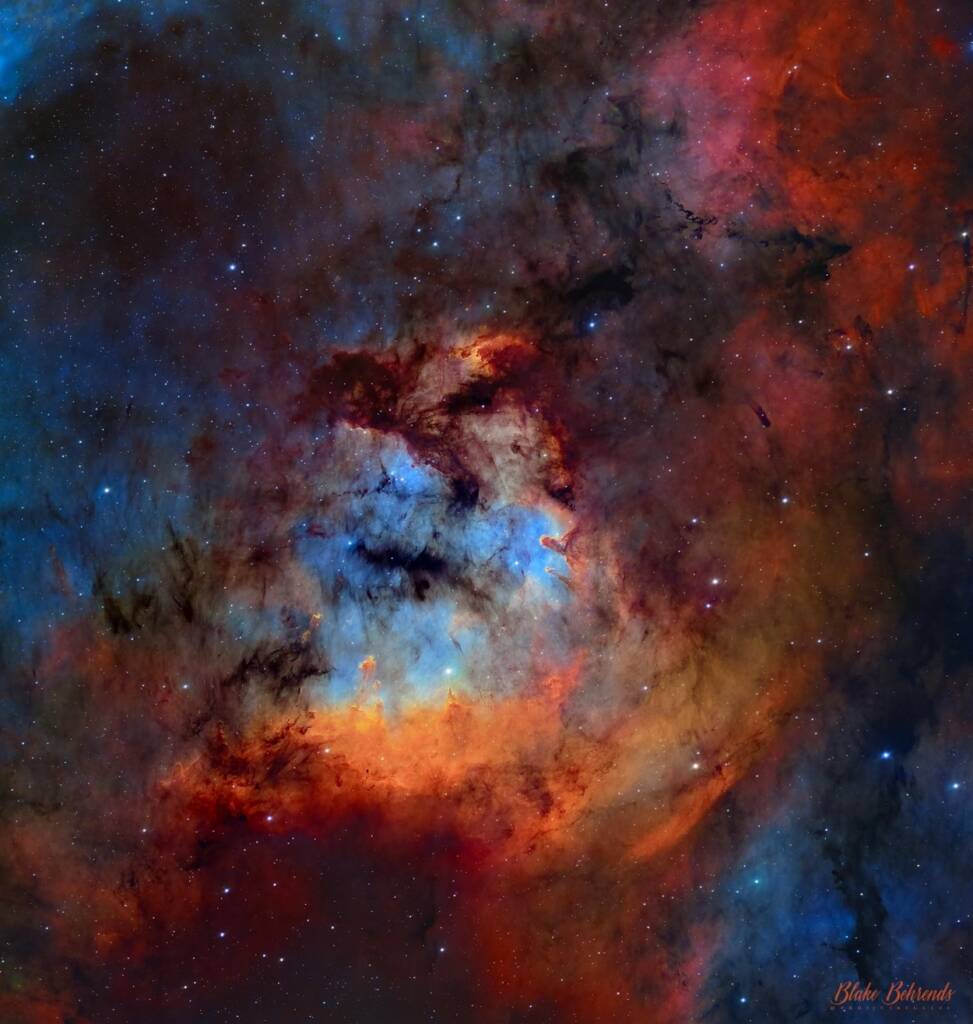
Q12: How many ZWO products do you have, what’s your first ASI camera?
Currently, I have six ZWO products:
My main camera is the ZWO ASI2600MM Pro, my Guide camera is the ZWO ASI174MM Mini, my auto focuser is a ZWO EAF, and the brain of my system, the ZWO ASIAIR Plus. I also have a ZWO ASI533MC Pro that I’ll use for certain occasions as well as a ZWO 7pos EFW for when I’m shotting at F/7.
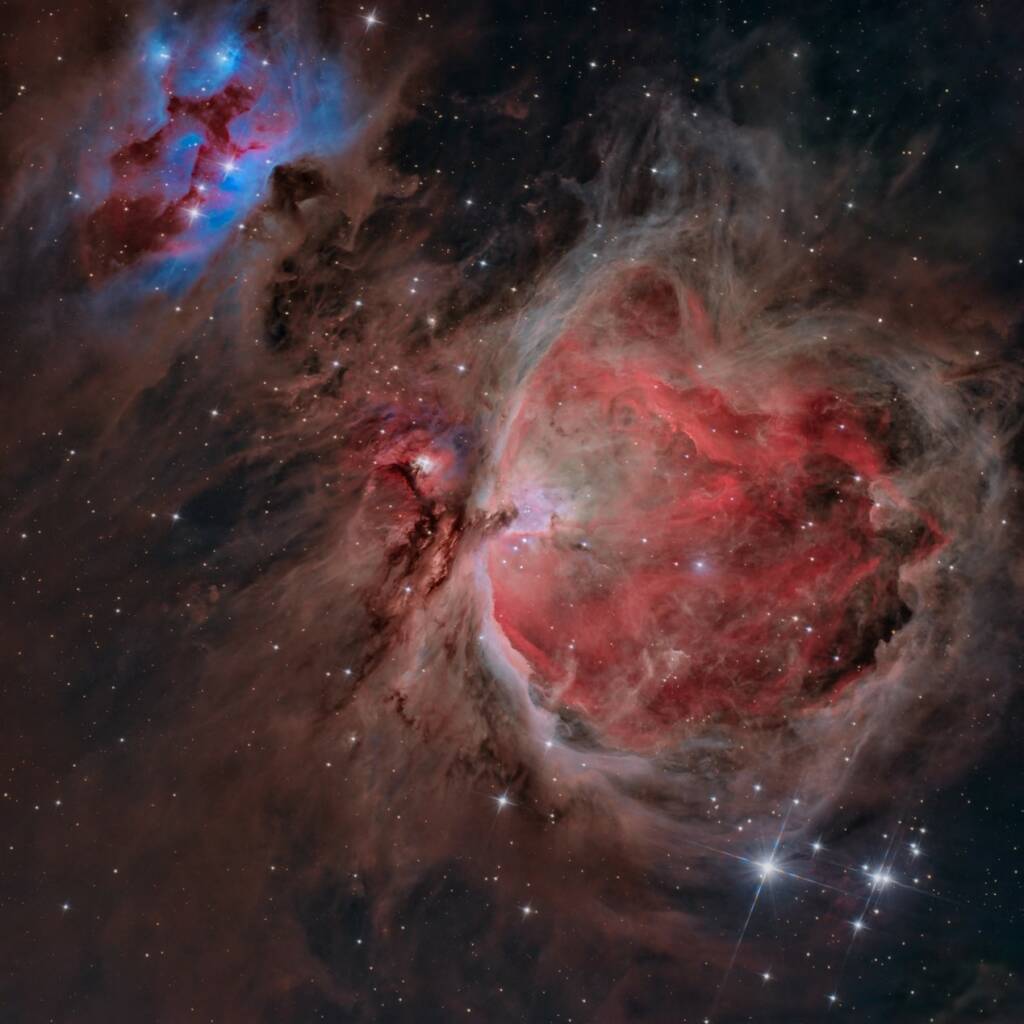
Q13: Would you mind sharing with us your upcoming shooting plans?
I am currently working on a few projects. A 2-panel HaLRGB mosaic of the Witches Head Nebula, the Skull and Crossbones Nebula in HbSHO, The Angel Nebula in HaLRGB, Sh2-313 in SHO, M81 & M82 in HaOIIILRGB, The Horsehead nebula in Hb-NIR-SHO, The Spider Nebula in HbSH to collaborate with Jonas Moiel’s HaLRGB data, and the Christmas Tree Nebula in HbSHO,


